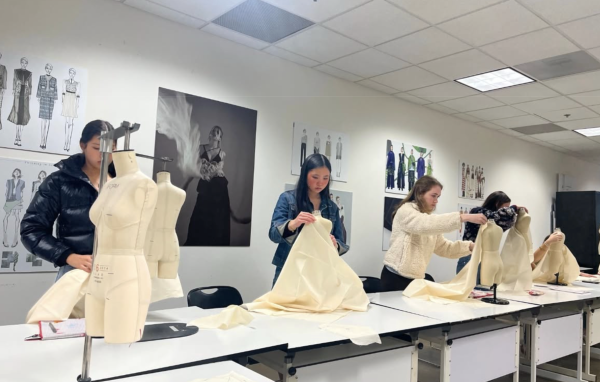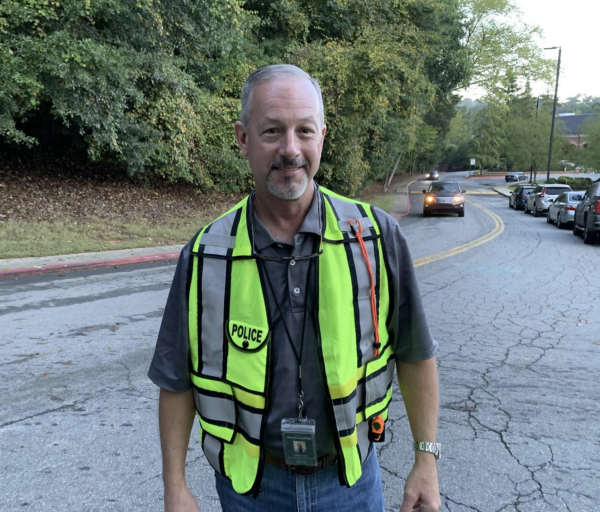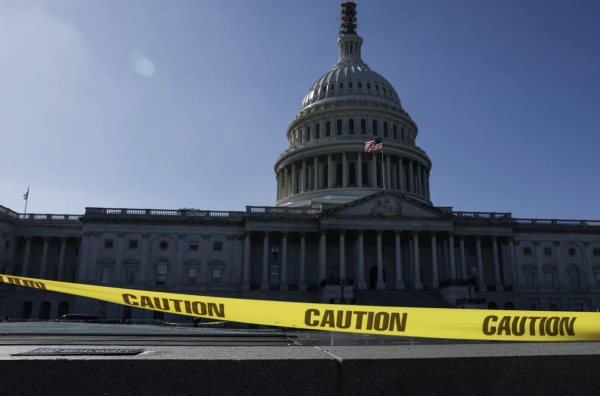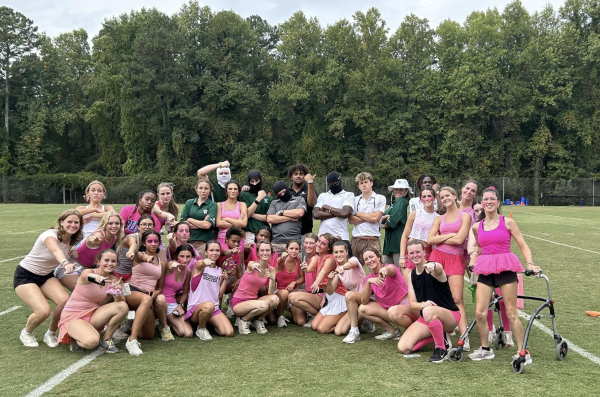Visiting artists share focus on identity with students
Young artists Fahamu Pecou and Nina Buxenbaum display their work in the Broyles gallery.
A showplace for everything from clay sculptures constructed by elementary school students to the slightly more sophisticated work of Westminster’s talented art teachers, the Broyles gallery is currently home to the creations of a pair of emerging, visiting artists. From Oct. 9 through Nov. 2, Nina Buxenbaum and Fahamu Pecou are exhibiting pieces relating to the idea of identity in the gallery space.
Though the two young artists have vastly different styles, their work is connected by a shared focus on the contrast between public and private personas. In Pecou’s case, an attempt to understand the American obsession with celebrity serves as the impetus for many of his pieces. This inspiration dates back to his years as a graphic designer, when he created collateral for hip-hop artists, politicians, and small businesses.
“I was always creating these images of people and ideas about people that would help them sell a product and I was always amused by the fact that the person who most people would see in these advertisements wasn’t the person who I was dealing with,” Pecou said. “They would have a public face and then they would have a more private, intimate face.”
As Pecou reflected on this idea, he began to wonder why visual artists never used advertisements or promotion campaigns to raise awareness about their own work.
“Almost as a joke,” said Pecou, “I started my own campaign and created my own persona to investigate and play around with this experiment.”
The project began to grow and develop, and soon Pecou had crafted an alternate identity for himself. In contrast to his shy and private demeanor, this public persona takes the form of a flashy and often outrageous celebrity.
“My question with every iteration of the project was what if,” Pecou said. “What if I do this? What if I say this? What if I take my canvas to the middle of Ponce de Leon and set up an easel and start painting? What if I show up at a gallery with bodyguards and pretty women around me? How would people react to that?”
With the conception of his persona, Pecou’s belief in his own ideas and “crazy thoughts” has grown.
“I had this idea to do something; I put it out in the world and it had an effect,” Pecou said. “It gave me more confidence to test my ideas, to explore things, to take risks, and to not feel like I had to do something the way someone else had laid it out; that I could make my own way.”
A member of a multiracial family, Buxenbaum crafts work that focuses on the public and private personalities associated with race rather than with celebrity.
“As a biracial woman I have always felt a part of two worlds: my mother’s southern African American heritage and my father’s German American family in upstate New York,” Buxenbaum said. “I felt like I had to speak two languages in order to fit into these two worlds.”
In high school and college, Buxenbaum constantly felt compelled to justify her racial and cultural identity, and as a result she developed two conflicting personas.
“As I got older, I realized that, as Americans, many of us feel this cross-cultural pull, this private versus public identity,” Buxenbaum said. “We all are often multilingual, so to speak; in order to communicate within the diverse world we live in.”
Buxenbaum explores this idea in her paintings of human topsy-turvy dolls. During her childhood, she discovered one of these dolls in the secret crawl space of her great aunt’s house, which may once have been a part of the Underground Railroad. The doll, which had two faces alternatively hidden by a wide skirt, served as the genesis of her later work.
“I remember feeling a lot like that doll,” Buxenbaum said. “That my outside didn’t really reflect the person I was inside.”
Though much of Pecou’s art does explore the phenomenon of celebrity, the major theme behind his work is also race or, specifically, the way that African American men are perceived in today’s world. He began to develop this focus after the birth of his son, who is now five years old.
“I reflected on my own childhood. I didn’t grow up with my father or a lot of men around me, so I was really frightened,” he said, describing the first time he held his son. “I dedicated my work from that point out to asking questions about what it means to be a man and what it means to be a black man, and how I could, in some way through my art, impact that.”
In particular, Pecou tries to combat damaging images and ideas about African American men. While he doesn’t see himself as a stereotypical black man, he often finds that negative assumptions are made about him due to his race.
“Regardless of what I said or what I was doing, certain people would have a certain idea about who I am just based on the fact that I was a black man,” said Pecou.
As professional artists, both Buxenbaum and Pecou continue to refine their work, constantly attempting to improve their styles, methods, and creative processes.
“As an educator I believe I am also a lifelong learner,” Buxenbaum explained. “I believe in having a passion to be great at something and working on it everyday to achieve that greatness.”
Pecou agreed.
“With every work that I do, I’m always trying to outdo myself,” Pecou said. “I’m always trying to challenge myself so that I don’t feel comfortable, because at the moment where I feel like I know it all, I realize that I might as well be dead. The thing that keeps me going and keeps driving me is that there’s always other levels to get to.”
Lauren Sleat and Ben Steele, two of Westminster’s visual arts teachers involved in the organization of the Broyles show, believe that it will be beneficial for students, whether artistically inclined or not, to witness the dedication and passion that Buxenbaum and Pecou put into their work as well as their pieces dealing with the theme of identity.
“Being exposed to artwork of any kind at any time would be a good idea to expand one’s knowledge of what’s out there,” Steele said.
Reflecting on his participation in the Broyles show, Pecou hoped that students would be able to get in touch with their own identities, as well as those of others, through art.
“Art is about connections,” he said. “It’s a way for us to leave a legacy, to leave a mark, that allows future generations of people to connect not just with the historical or factual evidence of what has been but with what it felt like, what people experienced and what they went through.”








